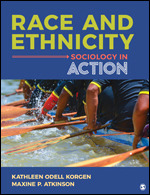You are here
Environmental Injustice in Alaska and the Lower 48 States
Activity: American Indians and Alaska Natives: Surviving Genocide

- Time frame: 30 minutes
- Setting: Online or face-to-face
- Source: Chapter 6 (Learning Outcome: 6.6) from
Race and Ethnicity: Sociology in Action,
edited by: Kathleen Odell Korgen and Maxine P. Atkinson - Contributor(s): Kathleen Odell Korgen
Doing Sociology 6.6 Environmental Injustice in Alaska and the Lower 48 States
In this exercise, you will consider the pros and cons of establishing a mine near a pristine lake in Alaska. Alaska Natives and American Indians on the U.S. mainland often have to decide between jobs and income and the health of their sacred environment (Gilio-Whitaker 2019). In Iliamna, Alaska, the cost of living is high—a half gallon of milk can cost over $13—and there are few job opportunities. A proposed gold, copper, and molybdenum mine could provide financial means for the community but at the risk of permanently polluting the pristine waters of Iliamna Lake and its watershed, one of the world’s last spawning grounds for wild salmon.
Imagine you live near the proposed mine. Then write answers to the following questions from the perspective of someone who (a) lives in a village downstream and depends on salmon for a living, (b) would gain a job selling food to miners, (c) is a village elder and activist who believes the lake is sacred, and (d) is the regional leader of the mining corporation.
- What might people from each of the four perspectives say about the mine? Write a paragraph for each perspective that includes your reaction to the proposed mine and information to support your reaction.
- Which of the perspectives do you agree with most? Why?
- Tom Collier, a mine executive, claims that a mine can boost the economy without harming Iliamna Lake and its surroundings: “It’s really a false choice when people say you’ve gotta choose between environmental protection and natural resource development. You can in fact do both.” Do you think there is any truth to his claim? Why or why not?
Note to Instructors:
If this exercise is used in an in-person class, show the following video to all students and then ask them to answer the questions alone and then in pairs or groups (depending on the size of the class). We accessed the video at https://www.today.com/video/why-alaska-residents-are-fighting-against-a-billion-dollar_mine-project-71554117505.
